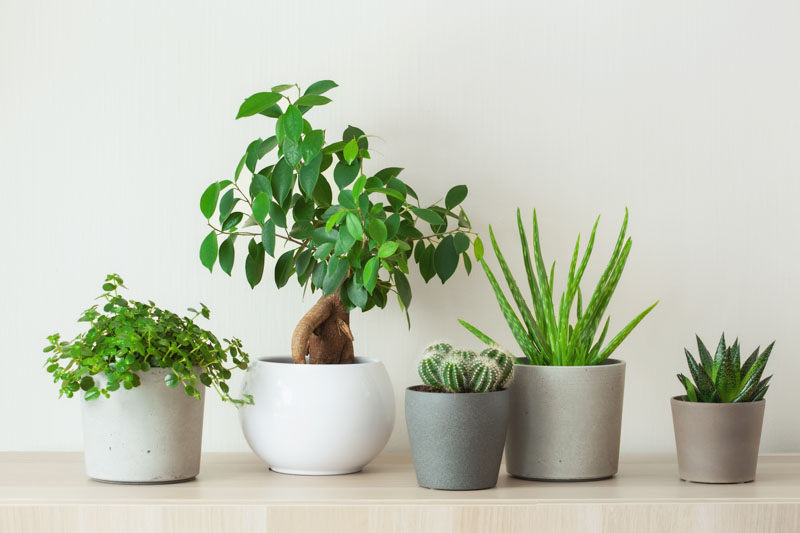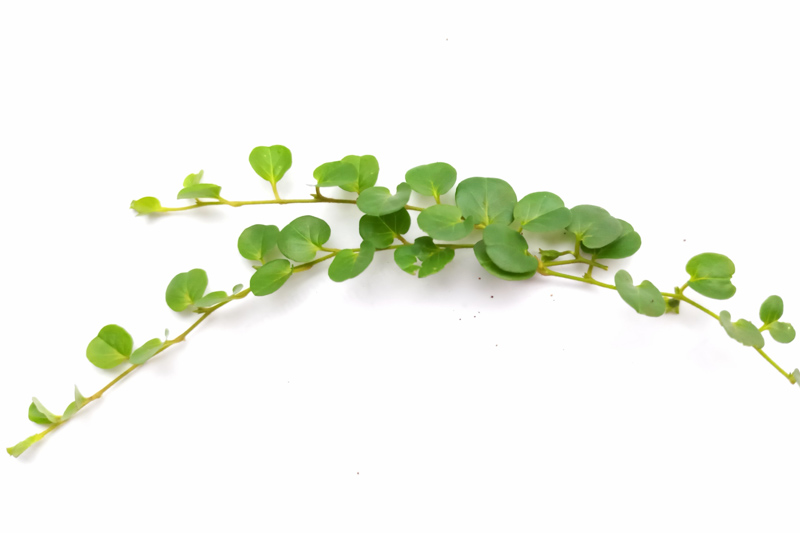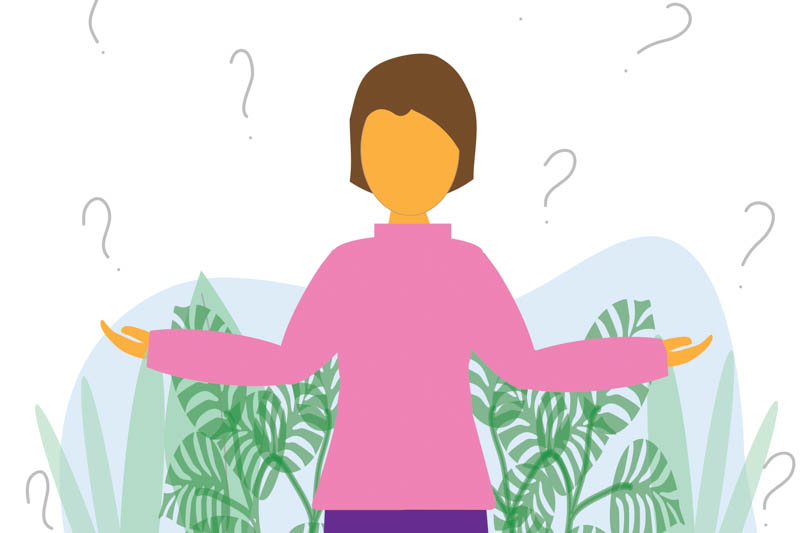Baby Tears, Depressed Clearweed
Pilea depressa, commonly known as Baby Tears or Depressed Clearweed, is a charming and fast-growing plant favored for its lush, mat-forming growth habit and tiny, vibrant green leaves. It’s an excellent choice for adding a touch of greenery to indoor spaces or shaded garden areas.
Pilea depressa is characterized by its dense, ground-hugging foliage, composed of small, round, and soft leaves that cover its delicate, trailing stems, creating a carpet-like appearance.
Native: This plant is native to the Caribbean, thriving in the understory of forests where it enjoys a warm and moist environment. It belongs to the nettle family (Urticaceae) and is part of a diverse genus with over 600 species.
Plant Type and Habit: Baby Tears is a tender, evergreen perennial with a creeping habit. This makes it ideal as a ground cover or a trailing plant in hanging baskets and terrariums.
Size: It typically grows to about 4 inches in height (10 cm), with trailing stems that can spread up to several feet in length when given enough space and time.
Flowers: Baby Tears produces tiny, inconspicuous flowers often overlooked in favor of its attractive foliage.
Foliage: The lush, green foliage is the main draw of Baby Tears, offering a vibrant splash of color in shaded areas or indoor settings. Its small, rounded, glossy green leaves are borne in alternate pairs along the stems.
Hardiness: If grown outdoors, it is suited for USDA hardiness zones 10-12, but due to its sensitivity to cold temperatures, it is predominantly kept as an indoor plant.
Uses: It’s widely used as a decorative plant in terrariums, as ground cover in shaded gardens, in hanging baskets, and as a filler in mixed container plantings.
Toxicity: Pilea depressa is generally considered non-toxic to pets and humans, making it a safe choice for households with animals and children.
Invasiveness: It can become invasive in tropical climates if not contained. However, it is easily managed in most home gardens and indoor settings.
Benefits: Apart from its aesthetic appeal, it can help purify the air and increase humidity in its immediate vicinity, contributing to a healthier indoor environment.

Growing and caring for Baby Tears, whether indoors or outdoors, is relatively easy due to its adaptable and forgiving nature.
Light: Baby Tears thrives in bright, indirect light. Place it near a window where it can receive plenty of light without being exposed to direct sunlight, which can scorch its delicate leaves.
Soil: Use a well-draining potting mix to prevent water from accumulating around the roots, which could lead to root rot.
Water: Keep the soil consistently moist but not waterlogged. Water when the top inch of the soil feels dry to the touch. Reduce watering in the winter months when growth slows.
Humidity: This plant prefers high-humidity environments. Increase humidity by placing it on a pebble tray filled with water or using a room humidifier, especially in dry indoor conditions.
Temperature: Maintain indoor temperatures between 60-75°F (15-24°C). Pilea depressa is sensitive to cold drafts and sudden temperature changes.
Fertilization: Feed with a balanced liquid fertilizer diluted to half strength once a month during the growing season. Do not fertilize in the winter.
Pruning: Trim back leggy growth to encourage a fuller, bushier plant. This can also help improve air circulation around the foliage.
Light: In outdoor settings, place Baby Tears in a spot that receives partial to full shade. Too much direct sunlight can damage the leaves.
Soil: If planting in the ground, ensure the soil is rich in organic matter and drains well. For container gardening, use a high-quality potting mix similar to indoor plants.
Water: Outdoor plants may require more frequent watering to maintain consistent soil moisture, especially in warmer months. Ensure the plant is in well-draining soil to avoid waterlogging.
Temperature: Pilea depressa can be grown outdoors in USDA zones 10-12 as a perennial. In cooler climates, it is treated as an annual or brought indoors before the first frost.
Fertilization: Like indoor plants, fertilize outdoor Pilea depressa monthly with a half-strength balanced fertilizer during the growing season.
Propagating Baby Tears is straightforward and can be an enjoyable way to expand your collection or share with friends. Here’s a simple guide on how to propagate through stem cuttings:
Choose Healthy Stems: Select a healthy stem from the parent plant. Look for stems that are robust, with several leaves, and show no signs of pests or diseases.
Cut: Using a clean, sharp pair of scissors or a knife, cut a 2-4 inch section of the stem. Ensure the cutting includes at least two leaf nodes (the points on the stem where leaves emerge).
Prepare: Remove the leaves from the lower part of the cutting, leaving only a few leaves at the top. This reduces moisture loss while the cutting is rooting.
Water Method: Place the stem cutting in a jar or glass of water, ensuring the leaf nodes are submerged but the leaves remain above water. Place the jar in a location with bright, indirect light. Change the water every few days to keep it fresh. Roots should begin to appear within a few weeks.
Soil Method: Fill a small pot with a well-draining potting mix. Moisten the soil lightly, then insert the bottom end of the cutting into the soil. Gently press the soil around the cutting to secure it. Place the pot in a warm, bright spot, away from direct sunlight.
Light and Water: Keep the soil or water consistently moist but not soggy. If rooting in soil, you can cover the pot with a plastic bag or a clear plastic container to create a mini-greenhouse effect, which helps maintain high humidity around the cutting.
Transplanting: Once the cutting has developed a robust root system (in water, you’ll see several inches of roots; in soil, the cutting will resist gentle tugs, indicating root growth), it can be transplanted to a larger pot if necessary. Continue to care for it as you would a mature Pilea depressa.

Baby Tears is generally easy to care for, but like all plants, it can encounter pests, diseases, and common problems.
Spider Mites: These tiny pests can be identified by the fine webs they weave on the plant. They cause yellowing or speckled leaves. Increase humidity around the plant and wash it with a strong stream of water. For severe infestations, use insecticidal soap or neem oil.
Mealybugs: These white, cottony pests tend to cluster in leaf axils and under leaves, sucking sap and weakening the plant. Remove with alcohol-dipped cotton swabs or apply neem oil.
Scale insects: Hard or soft-bodied insects that attach themselves to the stems or leaves, causing yellowing and growth stunting. Scrape off with a fingernail or use a cotton swab dipped in rubbing alcohol. Insecticidal soap or neem oil may also be used.
Aphids: These small, green pests suck sap from new growth. Rinse them off with water or treat the plant with neem oil.
Root rot: Can occur if the plant is overwatered or if the potting mix does not drain well. Symptoms include yellowing leaves and a mushy stem base. Prevent this by ensuring good drainage and letting the top inch of soil dry out between waterings.
Powdery mildew: Might affect the leaves in high humidity with poor air circulation, appearing as white powdery spots. Improve air circulation and treat with fungicide if necessary.
Leggy Growth: Insufficient light can cause Baby Tears to become leggy as it stretches towards the light source. Ensure the plant receives bright, indirect light to promote compact growth.
Leaf Scorch: Direct sunlight can burn the delicate leaves of Baby Tears, causing brown, crispy edges. If you notice signs of scorching, move your plant to a location with filtered light.
Yellowing Leaves: Overwatering or poor drainage can lead to yellow leaves. Ensure your plant is not sitting in waterlogged soil and that pots have adequate drainage holes.

Pilea depressa thrives in bright, indirect sunlight. It can tolerate some direct sunlight, especially in the morning or late afternoon when the sun’s rays are less intense, but prolonged exposure to direct midday sun can scorch its delicate leaves. If grown indoors, a spot near a window that receives filtered light through a sheer curtain is ideal. Outdoors, it should be placed in a location that offers partial shade, especially in hotter climates.
Pilea depressa can be grown both indoors and outdoors, depending on the climate. In tropical or subtropical regions, where temperatures do not fall below 50°F (10°C), it can be grown outdoors year-round. In cooler climates, it’s popularly kept as an indoor plant to protect it from cold temperatures. When grown indoors, it’s a versatile plant that adapts well to the home environment, making it a popular choice for adding greenery to living spaces.
Aesthetic Appeal: Pilea depressa adds a lush, vibrant green touch to any space with its dense, mat-forming foliage. It’s particularly well-suited for hanging baskets, terrariums, or as a ground cover in indoor gardens.
Air Purification: Like many houseplants, Pilea depressa contributes to improving indoor air quality by absorbing pollutants and producing oxygen, making indoor environments healthier.
Low Maintenance: This plant is relatively easy to care for, requiring minimal maintenance, which makes it suitable for beginners or those with a busy lifestyle.
Mood Enhancement: The presence of green plants like Pilea depressa in indoor spaces has been shown to reduce stress, improve mood, and enhance productivity, contributing to overall well-being.
Promotes Humidity: Pilea depressa, through its transpiration process, can help increase the humidity levels in indoor environments, which is beneficial during the dry months or in air-conditioned spaces.
| Hardiness |
10 - 12 |
|---|---|
| Plant Type | Houseplants, Perennials |
| Plant Family | Urticaceae |
| Genus | Pilea |
| Exposure | Partial Sun |
| Season of Interest |
Spring (Early, Mid, Late) Summer (Early, Mid, Late) Fall Winter |
| Height |
3" - 4" (8cm - 10cm) |
| Spread |
1' - 2' (30cm - 60cm) |
| Maintenance | Low |
| Water Needs | Average |
| Soil Type | Loam, Sand |
| Soil pH | Acid, Neutral, Alkaline |
| Soil Drainage | Moist but Well-Drained |
| Characteristics | Showy, Evergreen |
| Garden Uses | Hanging Baskets, Patio And Containers |
| Hardiness |
10 - 12 |
|---|---|
| Plant Type | Houseplants, Perennials |
| Plant Family | Urticaceae |
| Genus | Pilea |
| Exposure | Partial Sun |
| Season of Interest |
Spring (Early, Mid, Late) Summer (Early, Mid, Late) Fall Winter |
| Height |
3" - 4" (8cm - 10cm) |
| Spread |
1' - 2' (30cm - 60cm) |
| Maintenance | Low |
| Water Needs | Average |
| Soil Type | Loam, Sand |
| Soil pH | Acid, Neutral, Alkaline |
| Soil Drainage | Moist but Well-Drained |
| Characteristics | Showy, Evergreen |
| Garden Uses | Hanging Baskets, Patio And Containers |
How many Pilea depressa (Baby Tears) do I need for my garden?
| Plant | Quantity | |
|---|---|---|
| Pilea depressa (Baby Tears) | N/A | Buy Plants |
Create a membership account to save your garden designs and to view them on any device.
Becoming a contributing member of Gardenia is easy and can be done in just a few minutes. If you provide us with your name, email address and the payment of a modest $25 annual membership fee, you will become a full member, enabling you to design and save up to 25 of your garden design ideas.
Join now and start creating your dream garden!
Create a membership account to save your garden designs and to view them on any device.
Becoming a contributing member of Gardenia is easy and can be done in just a few minutes. If you provide us with your name, email address and the payment of a modest $25 annual membership fee, you will become a full member, enabling you to design and save up to 25 of your garden design ideas.
Join now and start creating your dream garden!